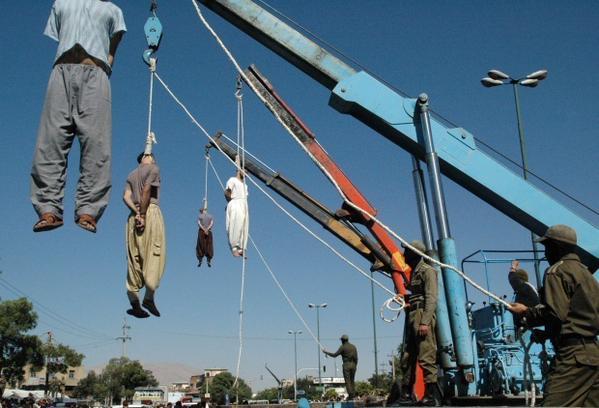40 Years of Khomeinism/عبد الرحمن الراشد/أربعون عاماً خمينية
Abdulrahman Al-Rashed/Asharq Al Awsat/February 14/19
Who could believe that, 40 years after Iran’s revolution, chaos is still unremitting and its dangers continue to threaten the people of Iran, the countries of the region and the world? Yet, with all the historical failures in challenging Iran, we should also not underestimate the failures of the Iranian regime, especially the failure to achieve its ultimate goals. Tehran may have succeeded in spreading chaos, but it is still fighting to turn the region’s countries into its own satellite states. Moreover, it has not achieved the idea of exporting the promised revolution. In his manifesto, Ayatollah Ruhollah Khomeini pledged to export his ideological project and work on regime change; however, Tehran has certainly failed to minimize the role of the world order in the Middle East, since the waters of the Gulf have remained under the control of US military vessels. Last but not least, it has even failed internally in maintaining the stability of the regime; which one way or another, remains trapped and confused.
This does not, however, negate the Tehran regime’s destructive achievements. The Iranian regime has spread chaos, although it has not succeeded in establishing anarchist regional regimes affiliated with it. No doubt it has managed to awaken sectarianism — not previously part of the means of political and intellectual conflict — to replace the struggle between the right and the left, which has subsided with the rise of extremist religious revolutionary thought. For their part, the region’s countries have succeeded in challenging the Iranian revolution. They have, of course, been fighting for their survival, and are continuing to fight in defense of their borders. On the other hand, the areas that have fallen into the hands of Iran, such as Lebanon and the Gaza Strip, have been bleeding for decades; and are now dangerous border zones whose populations are finding it difficult to escape the nightmare. Other areas, such as Syria, Iraq, and Yemen, are still resisting Iran’s radical takeover and are likely to succeed in repelling Tehran’s influence with regional and international support.
Forty years after Khomeini’s historic, ominous journey to replace the shah, we can see that the regime has consumed itself, its promises, its dreams and most of its masses. There is no doubt that the change that took place in Egypt with the removal of the Muslim Brotherhood’s rule in 2013 was a historic event that destroyed Tehran’s most important opportunities and aspirations. Had Cairo fallen under religious rule — keeping in mind the “Brotherhood” is like Khomeini in Iran — chaos would have spread even further, increasing the risks and making attempts to repel Iran’s attacks more difficult than ever.
Four decades after the mullahs came to power in Tehran, we can say that religious movements — of any religion and in any nation — pose equal danger to that of the fascist regimes which tried to dominate Europe during the 1930s and 1940s.
Four decades on, we witness significant changes, such as the reforms and opening up in Saudi Arabia, the Muslim world’s most influential country, and the efforts made by the leaderships of Pakistan and Azerbaijan to resist Tehran’s influence and interventions.
عبد الرحمن الراشد/أربعون عاماً خمينية
الشرق الأوسط/07 شباط/19
من يصدق أن أربعين عاماً على إيران، الفوضى لا تزال مستمرة، ومستمرة أخطارها على شعب إيران ودول المنطقة والعالم؟ إنما حتى مع هذه الإخفاقات التاريخية في مواجهة إيران لا نقلل من إخفاقات النظام أيضاً، وأهمها فشله في تحقيق أهدافه العليا. طهران نجحت في نشر الفوضى لكنها لا تزال تحارب من أجل تحويل المنطقة إلى دويلات تابعة لها. ولم تحقق تصدير فكرة الثورة الموعودة، ففي مانفيست آية الله الخميني تعهد بتصدير مشروعه الآيديولوجي وتغيير الأنظمة. وبالتأكيد لم ينجح في تحجيم دور النظام العالمي في منطقة الشرق الأوسط، حيث ظلت مياه الخليج محكومة بالبوارج العسكرية الأميركية. لم يفلح حتى في استمرار استقرار النظام في الداخل الذي بقي محاصراً ومضطرباً بشكل أو بآخر.
وهذا لا يلغي إنجازاته التدميرية، فقد نشر الفوضى، وإن لم ينجح في تأسيس أنظمة إقليمية فوضوية تابعة له. أفلح في إيقاظ الطائفية التي لم تكن جزءاً من وسائل الصراع السياسي والفكري، لتحل محل صراع اليمين واليسار الذي تراجع بصعود الفكر الثوري الديني المتطرف.
نجحت الدول الإقليمية التي وقفت سداً كبيراً في وجه الثورة الإيرانية، فهي بطبيعة الحاجة كانت تدافع عن بقائها، ولا تزال تقاتل دفاعاً عن حدودها. المناطق التي سقطت في يد إيران، مثل لبنان وقطاع غزة، تنزف ثمناً هائلاً منذ عقود، وهي مناطق تماس خطرة وصار يصعب على سكانها الخلاص من الكابوس الجاثم عليهما. مناطق، مثل سوريا والعراق واليمن، تقاوم محاولات الاستيلاء الإيراني المتطرف والأرجح أن هذه الدول ستنجح، في نهاية المطاف، في رفض نفوذ طهران بدعم إقليمي، ودولي.
بعد مرور أربعين عاماً على رحلة الشؤم التاريخية للخميني، خلفاً لنظام الشاه، نرى أن النظام قد استهلك نفسه ووعوده وأحلامه ومعظم جماهيره. ولا شك أن التغيير الذي حدث في مصر بإخراج «الإخوان المسلمين» من الحكم في عام 2014 فاصل تاريخي قضى على أهم فرص طهران وأمانيها. لو وقعت القاهرة في براثن حكم ديني، و«الإخوان» مثل الخميني في إيران، لكان قد عمت الفوضى أكثر، وزادت المخاطر، وأصبحت محاولات صد هجمات إيران أصعب من أي وقت مضى. بعد أربعة عقود من تولي رجال الدين الحكم في طهران نستطيع أن نقول إن أي حركة دينية، أي دين كان أو أي دولة، تعادل في أخطارها على المجتمعات الأنظمة الفاشية التي حاولت الهيمنة على أوروبا في الثلاثينات والأربعينات. بعد أربعة عقود هناك تحولات مهمة مثل الإصلاح والانفتاح الذي تمر به السعودية، كبرى الدول المؤثرة في العالم الإسلامي، وفي مساعي قيادتي باكستان وأذربيجان لمقاومة نفوذ طهران وتدخلاتها.






















